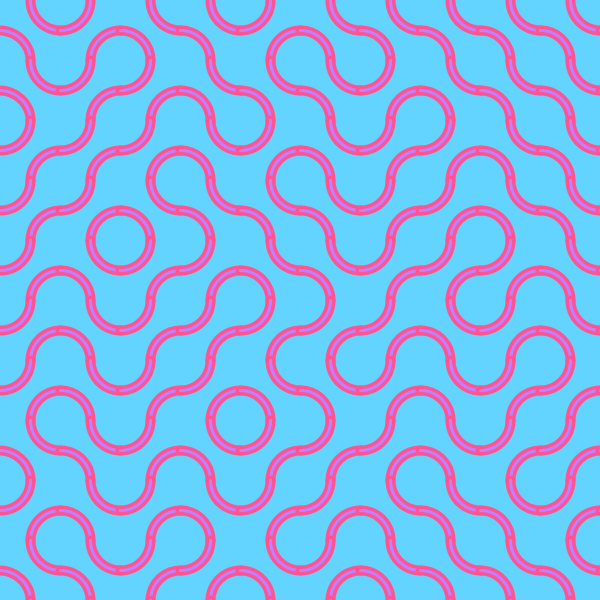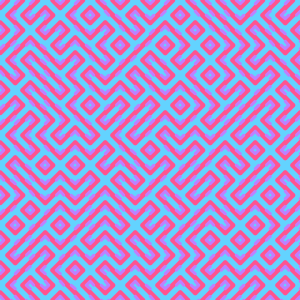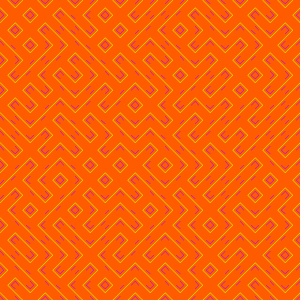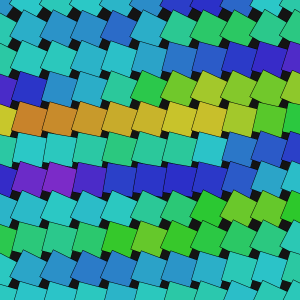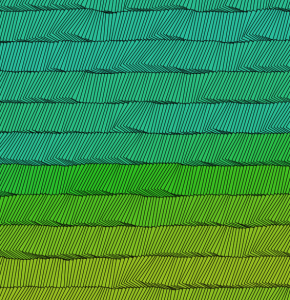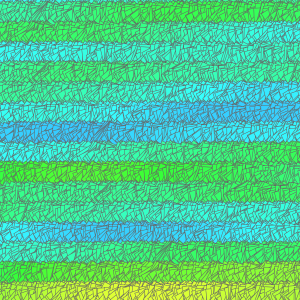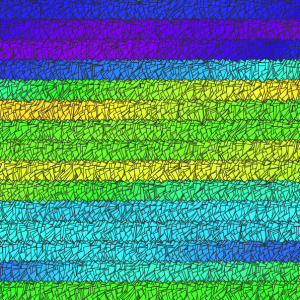Click on the arrows above to view a gallery of images. Truchet Tiling is a method of generating patterns through the arrangement of “tiles” whose corners are incomplete portions of shapes (e.g. ellipses, triangle, etc). For this project, I set out to create a Processing app that generates colorful manifestation of such tiles, with varying shape types, resolution, and color theme. The arrangement of tiles are randomised resulting in a different results at every run.
Category: itp
itp work and progress
-
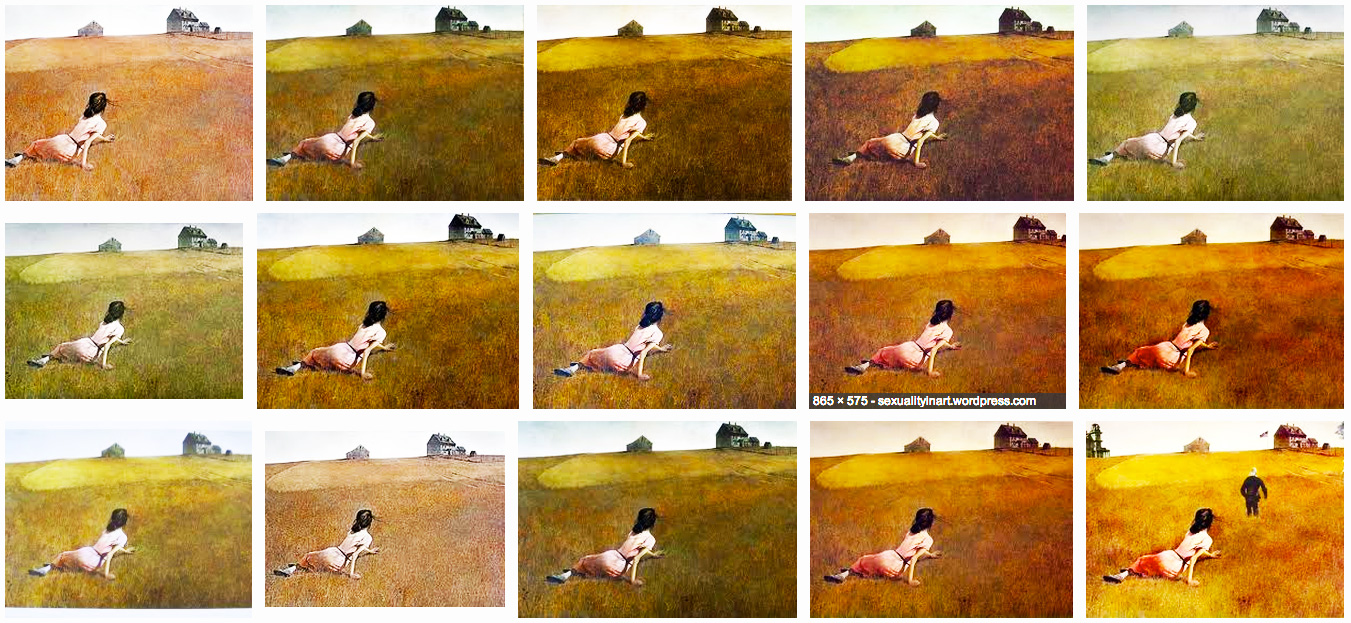
“Most artists are converted to art by art itself”
1.
It is known that if one sets out to create a new work, one will have to look in one of two directions: within or without. Such a view operates under the assumption that there is a well-defined boundary between what we carry in our psyches and what we don’t. This dichotomy is because of one’s own “uniqueness,” some would argue.2.
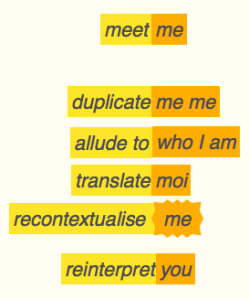
made by yours truly from other people’s ideas 3.
How unique are you? You might say very, because, after all, you have your very own genes, and live a strangely distinct and wondrous life. But do you, really? Your chromosomes, all 23 pairs of them, are almost the same as mine, with some variations. How different is your life than mine? We read the same books, we are marketed the same products, we consume the same entertainment, and are pretty much the manifestation of the same social constructs. Socioeconomic factors affect me as they affect you, and we deal with it the same way. We see the same sights, we travel the same paths.4.
I transformed this:
[soundcloud url=”http://api.soundcloud.com/tracks/79013756″ params=”” width=” 100%” height=”166″ iframe=”true” /]Into this:
[soundcloud url=”http://api.soundcloud.com/tracks/110237345″ params=”” width=” 100%” height=”166″ iframe=”true” /] -
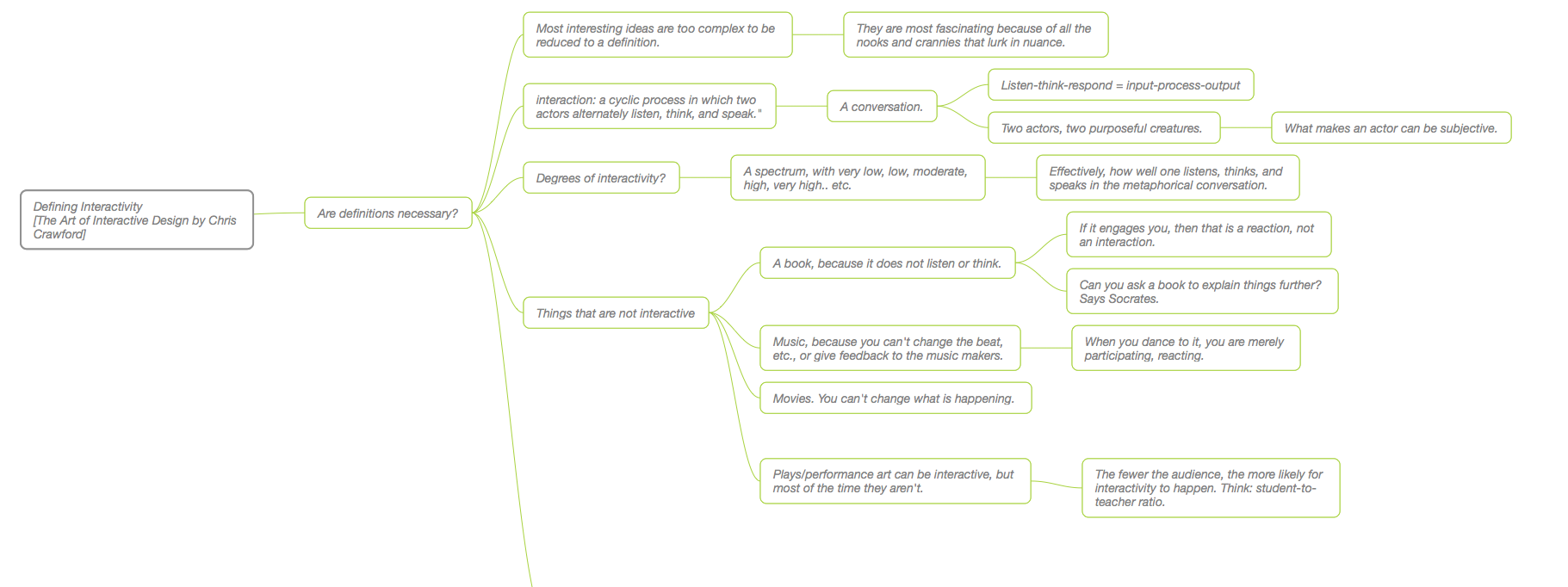
Music that listens: What is interactivity?
Click here to view the above image in proper scale.
1. Defining Interactivity
Chris Crawford argues that many of the mediums that traditionally can be thought of as interactive are in fact not; the opposing actors within them, though they might listen and speak, do not possess the capability to reach the appropriate level of thinking about, or processing, what is being listened to, to provide rich enough responses to be considered interactive. For instance, a dancer dances to a piece of music, but, Crawford argues, they are merely reacting to it; the music, if it is to be considered an actor, is static and does not respond to the dancer. In fact, music merely speaks, it does not think nor listens.
A performance to an audience is typically low in interactivity as the audience cannot influence how the performance is being performed. Similarly, a book does not listen, it just tells.
If I am to add to Crawford’s definition of interaction as a listen-think-speak cycle, I would argue that such a cycle should incorporate the concept of empathy to the model of interaction-as-conversation. This is a loaded statement as empathy entails a more thorough listening and thinking capabilities.
To begin with, an empathic listener is one that retains an accurate, evolving model of the listenee. This entails a working implementation of memory. In addition, to maintain the accuracy of said model, the listener should be able to detect as much information simultaneously about the listenee as possible. This leads to the need for the listener to maintain multi-sensory channels. Finally, being an empathic listener calls for the listen-think-speak cycle to be less asynchronous, and more driven by micro-feedback and immediate, affirming responses.
In a way, this definition is in line with the way Bret Victor argues that the future of interaction design should be modelled around the human capabilities, as manifested in the human hand.
2. What makes a good physical interaction?
A good physical interaction is intuitive. The action perform should be completely and exclusively afforded by the object; it should also be an extension to the actor’s capabilities (as Bret Victor would argue).
3. Examples of works that are good, but not interactive
Most graphic design work, while brilliant and necessary, is poorly interactive. For instance, logos are conventionally static. But why so? One of my all time favorite projects is Stefan Sagmeister’s dynamic identity project for Casa de Musica, where the colors and shape of the logo are a reflection of its current cultural offering.

Another interactively-lacking digital medium is most wayfinding systems. Signage is rarely interactive or accommodating to the state of the viewer.
-

Perlin-noise Polygon Stacks
For this project, I decided to experiment with the Perlin noise function noise() to control the rotation angles of a stack of polygons. I started with the an offset value that incremented in a really small magnitude (0.001), within the range of 0 to 45 degrees, just to test out the general effect on the appearance of the stacks.
The results were not that interesting as the change in the rotation angles was minimal. In addition, I wanted more color, so I used Perlin noise again to vary the Hue value for each of the rectangles (after switching to the HSB color mode).
The results were more interesting, but the change of color was too dramatic. Consequently, I decreased the magnitude of the hue’s noise function’s offset to 0.01 to lessen the change between the color of one rectangle to the other.
In addition, I wanted to increase the number of rectangles in each row, to give the whole arrangement more depth.
For the next revision, I wanted to remove the upper limit of the rotation angles from 45 degrees to 360 degrees to allow for more variations in appearance. I’ve also tried different variations in the hue’s offset, as well as lighter stroke colors.
The following is the code.
